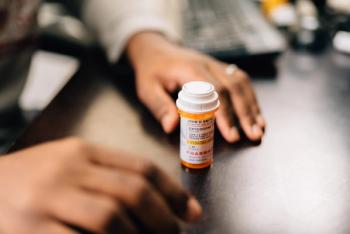
Pharmacy Practice in Focus: Health Systems
- September 2019
- Volume 8
- Issue 5
Balancing Research and Treatment of Rare Diseases
While Encouraging Research On Rare Disease States, Consider How Accessible the Treatments Will be for Those Who Need Them
Research into the treatment of rare diseases is an important part of drug development. About 30 million Americans have more than 7000 rare diseases, and more than half of those are children. Although rare diseases affect a large population, treatments are available for just 5% of the individuals who have them. Many of these diseases can be life-threatening.
To stimulate research, the Orphan Drug Act (ODA) was passed into law in 1983, giving drug companies incentives to develop drugs for diseases affecting fewer than 200,000 people in the United States or those affecting more than 200,000 individuals for which the manufacturer is not expected to recover the costs of developing and marketing a treatment drug. These incentives include a 7-year period of market exclusivity, a 25% tax credit for research and testing experiences, and a waiver of user fees.
Since 1983, the FDA has approved more than 500 orphan drugs. The year 2018 was particularly notable, with 34 of the 59 approved drugs indicated for rare diseases.1 Some of this increase may be attributed to the FDA’s 2017 release of a strategic plan to eliminate the agency’s existing orphan designation backlog and ensure timely responses to all new requests as well as to the growing knowledge of genetic pathophysiology of rare diseases.
BIGGER DISCOVERIES?
Often manufacturers end up with a blockbuster drug when they initially target a small subset of patients and then broaden the indication to a larger population (eg, infliximab [Remicade]), and often the discovery of these fundamental cellular activities is intertwined with a bigger pathway that may affect several diseases. For example, scientists studying congenital melanocytic nevus (CMN) found that their research may relate to many common cancers, such as adult-onset melanoma, because several genes known to cause CMN have proteins that work together to tell cells how to mutate.2 When these mutations occur early in development, they can lead to many other kinds of malformations.
Research by Ellen Sidransky, MD, into Gaucher disease at the National Institutes of Health led to the discovery that many of the mutations present in patients with that disease were also present in those with Parkinson disease.3 Yet another example is from research into familial hypocholesteremia, which is caused by a rare mutation in the gene encoding low-density lipoprotein (LDL) levels.2 This research led to a greater level of understanding of LDL’s role in cholesterol synthesis, which subsequently resulted in development of the mechanism of action of statins. In these cases, incentives to develop a treatment for a rare disease led to big discoveries.
HIGHER DRUG COSTS?
Although the initial intent of the ODA was to provide incentives to manufacturers to develop drugs, experts are increasingly concerned that the intent may be being gamed, and some people think that this contributes to the drug pricing debate. Because these drugs are often the only ones on the market to treat a disease, no one can challenge their costs
For example, this year, the FDA approved onasemnogene abeparvovec-xioi (Zolgensma) for the rare childhood disorder spinal muscular atrophy.4 At about $2.1 million per patient, the agent is the most expensive therapy on the market. The cystic fibrosis drug lumacaftor/ ivacaftor (Orkambi) and the idiopathic pulmonary fibrosis treatment pirfenidone (Esbriet) have generated hundreds of million in sales over the past few years.4
In 2017, the 100 best-selling rare-disease drugs had a mean annual cost of more than $147,000 per patient compared with the approximately $31,000 annual per-patient cost for the 100 best-selling drugs for other diseases.5,6
IS REFORM NEEDED?
Although the FDA has approved many breakthrough therapies via the orphan drug process, challenges still exist, and some argue that manufacturers may be gaming the system by “slicing” indications or having concurrent approval for a non— rare-disease indication.
Part of this may be due to advances in molecular genetics and precision medicine.7 In some instances, scientists are able to understand the precise detail of a genetic combination contributing to a disease, and cancers are being subclassified by their underlying mutation. Because of this, an agent may obtain orphan drug designation because of the small subset of patients who have a particular disease, even though that indication may later be broadened. For example, the kinase inhibitor dabrafenib (Tafinlar) was initially approved for the treatment of BRAF V600E—mutated metastatic melanoma. In 2018, dabrafenib had global sales of $1.2 billion, partly because of supplementary approvals for other BRAF V600E–mutated cancers.4
Blockbuster drugs such as adalimumab (Humira), etanercept (Enbrel), and rosuvastatin (Crestor) have also gotten an added orphan designation for a subset of patients. Some argue that as more research targets subpopulations of common diseases, fewer drugs will go through the traditional approval process, which may have unintended consequences.
THE PHARMACIST'S ROLE
Medicine spending is shifting toward specialty medications, with the majority requiring increased complexity of care and often exclusive distribution channels. Many of these specialty medications are orphan drugs that are available from only specialty pharmacies.
Pharmacists are on the front line of treatment for many of these diseases and can help patients navigate the drug dispensing and reimbursement system. Because of the complex nature of these drugs, educating patients about proper storage and adherence is very important.
Medical professionals also need to be aware of the legislative environment around drug pricing and incentives. In this period of debate, being informed will contribute to not only proper legislation but also the best patient care.
CONCLUSION
As in any debate, arguments exist on both sides. It is critical to find the balance between providing incentives to develop treatment for disorders that have no therapy and providing affordable access to these therapies for patients.
Modernizing stewardship of the ODA is important to achieve what former FDA Commissioner Scott Gottlieb described as “our ultimate goal: to facilitate the development of safe, effective innovations that have the potential to meaningfully impact rare diseases.” 9
REFERENCES
1. IQVIA. Orphan drugs in the United States (part one): growth trends in rare disease treatments. IQVIA website. iqvia.com/institute/reports/orphan-drugs-inthe-united-states-growth-trends-in-rare-disease-treatments. Published October 17, 2018. Accessed August 20, 2019.
2. EvaluatePharma. Orphan drug report 2019. Evaluate Pharma website. https:// bit.ly/30HuCdH. Published April 2019. Accessed August 20, 2019.
3. Brooks M. Rare disease treatments make up top 10 most costly drugs. Medscape website. medscape.com/viewarticle/879422. Published May 2, 2017. Accessed July 10, 2019.
4. Kwon D. How orphan drugs became a highly profitable industry. The Scientist website. May 1, 2018. the-scientist.com/features/how-orphan-drugs-became-a-highly- profitable-industry-64278. Accessed July 6, 2019.
5. Thomas S, Caplan A. The orphan drug act revisited. JAMA. 2019;321(9):833834. doi: 10.1001/jama.2019.0290.
6. Novel drug approvals for 2018. FDA website. www.fda.gov/drugs/ new-drugs-fda-cders-new-molecular-entities-and-new-therapeutic- biological-products/novel-drug-approvals-2018. Updated September 27, 2018. Accessed July 6, 2019.
7. FDA is advancing the coals of the orphan drug act. FDA website. www.fda. gov/news-events/fda-voices-perspectives-fda-leadership-and-experts/fda-advancing-goals-orphan-drug-act. Updated June 28, 2018. Accessed July 10, 2019.
Articles in this issue
about 6 years ago
Identify the Responsibilities of a “Designated Person”about 6 years ago
Intravenous Lidocaine Can Treat Acute Painabout 6 years ago
New Antimicrobials Expand Treatment Optionsabout 6 years ago
What Are the Newest Breast Cancer Treatment Options?about 6 years ago
Emphasize Medication Adherence to Patientsabout 6 years ago
The Pharmacist's Critical Role in Antimicrobial Stewardshipabout 6 years ago
BYO Is Not a Good Idea for Pharmaceuticalsabout 6 years ago
Get Set for a Busy Conference SeasonNewsletter
Stay informed on drug updates, treatment guidelines, and pharmacy practice trends—subscribe to Pharmacy Times for weekly clinical insights.



















































































































































































































